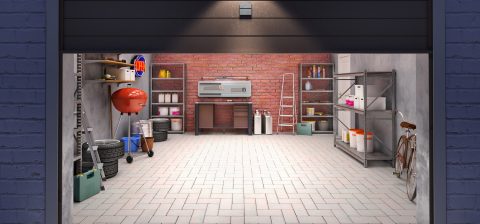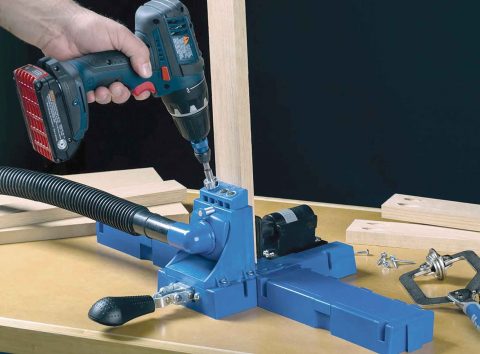EasyDIY
Make Your Own Compost
By: Julia Florence Smith
Once leaves have done their time adorning trees, they continue providing sustenance in a useful role as mulch or become part of the valued carbon (brown) layer when added to the compost heap.
Dead dried fallen leaves left to cover the ground as mulch add nutrients to the soil, retard weed growth and provide insulation from colder weather in some areas.
Should you choose to incorporate them in a compost heap, they will decompose quicker if cut into smaller pieces. If you don’t have a shredder, this is easily done by lifting the lawnmower blades to their highest setting and running the mower over them.
Alternatively, after raking fallen leaves you can simply dig a hole in the ground and bury them. If you opt to compost them in such a way, choose a spot for the hole where you plan to plant up a bed in the future or dig one between existing beds.
A good depth is about one-and-a-half times the spade head, which is about 45 centimetres. Leaves do need nitrogen to decompose, so at the base of the hole, deposit a “green” layer (see details below) followed by the “brown” one. This will speed up the decomposition.
Composting is good for the environment
Using the waste from the kitchen and garden in a compost heap serves to preserve the environment. This waste from garbage bins would otherwise be sent to a landfill, which contaminates underground water as it decomposes. As it rots, methane gas is produced, which is far more harmful to us than carbon monoxide.
Compost improves the structure of soil making it more useful
Sandy soil has the habit of acting like a sieve for water and sometimes seeming like it is “oily” as the water just runs off as it does off a duck’s back. Compost incorporated in sandy soil makes the particles stick together.
Clay soil is notorious for letting water dam up on the soil’s surface so it hardly reaches the plant’s roots. Compost has the effect of separating the soil particles making it more friable and available for nourishing the plant.
How to build a compost heap
Select a sunny spot which is out of sight of the “play” area. The sun speeds up the composting process, but this means that it could also cause the heap to dry out quickly. So when you notice this, be ready with a sprinkler – not to drown the heap but simply to keep it moist.
Decide on a manageable size as you are going to have to turn its contents with a fork every two weeks or so. A metre by a metre is usually a good size. Build it as high as it is wide. Once it has reached that height, build another one beside it so you have a constant supply of compost.
To ensure there is good aeration from the start, build your first layer of about 20 centimetres high with sticks and twigs.
Then add layers of green and brown material followed by a layer of manure. Straw incorporated in between the layers aids aeration. Kraal and stable bedding made up of straw has the added bonus of containing manure.
You may cover the heap to keep in the warmth and prevent it from getting too wet if there is imminent rain.
Keep your heap mildly moist and turn it every two weeks or more often if you can.
What elements are needed to make compost?
Air circulation, moisture, a green layer of nitrogen-rich contents and a brown layer of carbon waste. Cow, sheep, goat and chicken manure are good for accelerating the speed at which the heap decomposes. It also makes the heap heat up, meaning the tiny creatures contained in it are hard at work composting.
What is the successful ratio of the layers making up the heap?
45 per cent “green”
35 per cent “brown” plus 10 per cent sticks and shrub “prunings” that have been cut up into small pieces
10 per cent manure
What is meant by the green and brown layers?
The green layer is nitrogen-rich waste such as kitchen scraps like vegetable peelings, fruit, spent healthy (not diseased) plants, grass clippings, tea leaves broken out of the tea bags, washed seaweed, coffee grounds. (Note that not all items from the green layer are green in colour, for example, carrot peelings).
The brown layer is carbon-rich and is made up of eggshells, newspaper that has been shredded, torn-up cardboard egg cartons, dead leaves, corn cobs, and sawdust from untreated wood.
Which items should you not use in a compost heap?
Meat, fish, bones, dog and cat faeces, disposable nappies, other sanitary items, diseased plants, glossy paper and those with coloured inks, cooked or raw rice, and citrus fruit (they make the heap too acidic).
Burnt leaves are beneficial. Adding a small quantity of burnt leaf and wood ash to the compost heap is useful as it contains important trace elements such as potassium (for fruiting and flowering) and phosphates (root health). The ash may be sprinkled around plants too, but take care to do this sparingly. It may be used to raise the PH of the soil (a practice called liming) making it less acidic.
Building your own compost bin
Build your own compost bin using an ordinary garbage bin. You will need to drill holes in it to aid aeration. Drill rows of 1.5cm holes every 15cm along its height.
You may “stir” the organic matter in the bin to speed up decomposition. The bin may be rolled to turn its contents. To help prevent its contents from sticking together, you can attach a length of wood inside the bin reaching from top to bottom.
When will the compost be ready to use in the garden?
It usually takes four to six months for the compost to mature. Adding it to the soil before it is ready can be detrimental to plants.
The compost is ready when it is dark brown, spongy and the original form of the organic matter is no longer identifiable.
A compost tumbler
The compost tumbler is the most effective way of making compost as it takes the effort out of turning its contents. Turning the pile keeps the microbes active and alive because it allows air to enter.
The bin is sealed, which means the contents heat up quicker, accelerating the process.
The Yolo compost tumbler makes it easy to turn the compost even when the bin is full. As the bin is sealed, it does not attract monkeys and vermin who favour the compost heap as a ready source of food.
A commercial bin is loaded at the top and usually has a small door at its base from where you may remove composted material.
Trouble shooting
Invasion of insects: Lime and calcium may be added to the compost heap if it is invaded by fruit flies and other pesky insects. Or, you can keep a pile of grass clippings beside the heap to help control this. Each time you add another layer of organic waste, use the grass clippings to cover the new layer.
Decomposition is slow: If the heap is taking too long to decompose, speed up the process by keeping the heap warm. Adding grass clippings and chicken manure (rich in nitrogen) to the mix and turning the heap often expedites the process.
A recommended commercial product is the Wonder Organic Composter, which you’ll find at your nursery. The label reads: a microbial product designed to speed up the natural decomposition of garden waste.
The heap is smelly: If the compost becomes smelly it means it needs to be aerated. Add straw, dried leaves or soil to the heap. Adding garden soil is also beneficial as the micro-organisms in it will hasten the composting process.
A soggy heap may be corrected by adding soil and dry material like twigs and shredded cardboard.
The contents are clogging together: Grass clippings can become matted together, so rather sprinkle them on thinly. To remedy the problem, add kitchen scraps and woody bits from the garden.







 Sign-up and receive the Business Media MAGS newsletter OR SA Mining newsletter straight to your inbox.
Sign-up and receive the Business Media MAGS newsletter OR SA Mining newsletter straight to your inbox.